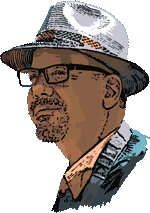
December 7, 2011

The paleoanthropologist John Hawks (above) is undertaking a worthy mission at his blog this week, detailing his and his students’ “investigation of pigmentation-related loci in archaic humans.”
For hominologists, trying to make sense of local and native traditions and ongoing sightings of hairy wild people, Yeren, Yeti, and Bigfoot, there is much to be learned from what various groups of hominids might have looked like. Hawks, et alii, are attempting “to determine what we can about the physical appearances of Neandertals and Denisovans.”
A great deal has already been discovered about what ancient (archaic) peoples looked like.
What do we know about the physical notions about the Siberian Denisovans?
Hawks previously hinted at some of his thoughts when he penned a posting, “Denisovans did not have red hair.”
Despite Denisovans being found in Siberia, what is surprising some genetic researchers is that the Denisovans appear to have added DNA material to, for example, Melanesians. In Reich, et alii, papers summarized in “Evidence of ancient admixture between the Denisova and anatomically modern human from Southeast Asia, Oceania, and New Guinea,” estimated that the Denisovans contributed “up to 7% of genetic materials of modern people from [those] areas.”
The modern media translated this into saying that the Denisovans are still living in the genetic makeup of the Melanesians. Perhaps this is partially true, but what does that tell us about what they really looked like? Well, I can have patience as Hawks unfolds what he wants to tell us, but I thought I’d throw in some images to ponder while we wait.
Variation among people in all populations is great. Would we think the Denisovans were appealing?
Is beauty in the eyes of the beholders, or in our genes?
Melanesians are remarkable looking people, attractive, no doubt, within and outside their own breeding populations.
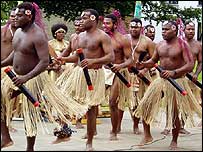
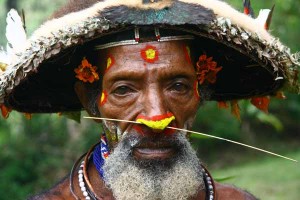
The traditional (above) and modern (below) view of Melanesians has an appeal to our human sense of beauty, won’t you say?

When it comes to what Neandertals looked like, are we pre-disposed to think they appeared to be “ugly,” whatever that means?
Certainly, my education system in elementary school, with old texts and misunderstandings of early findings, didn’t help.

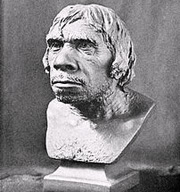
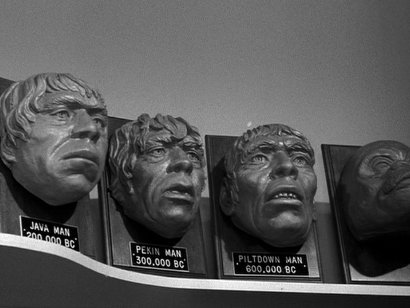
Today, even to use the word “Neandertal,” in conjunction with certain people, gives us mental images of whom we are dealing with…doesn’t it?

As John Hawks points out in his new posting and previously, we are in the midst of a time of major revisions in how we think about the appearance of Neandertals. Genetic studies are confirming (btw, as they have with Pleistocene mammoths) that Neandertals had red hair. Hawks’ posting, “The ‘flame-haired’ Neandertals” hit home with the DNA facts, earlier in 2007. Apparently, Neandertals probably had (or have, if you consider present survival a possibly) freckles too. Do they, if they are still “in us,” show themselves via red hair, freckles, and Celtic toes?
Of course, the initial 2007-2008 media presentations of the red-haired Neandertals were, well, rather harsh:

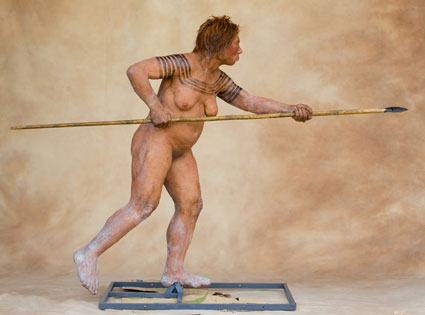
Predictably, National Geographic did tone down the robust nature of, at least, one freckled Neandertal face:
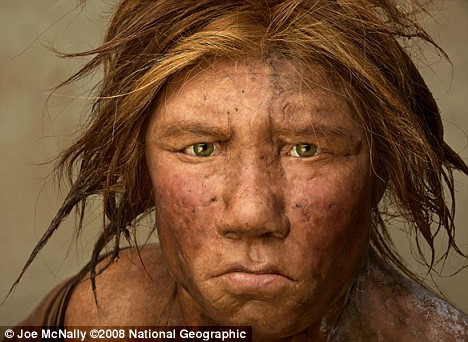
Perhaps it is my Eastern Band Cherokee-Scottish genetic makeup, but I tend to agree with those who find red hair and freckles are awesome. Ah, Neandertals are a lot more attractive that the mainstream media wants to admit.



Unfortunately, due to the popularity of South Park, “Ginger Kids” jokes are too common in America today, and a new minority group of freckled, red-haired, left-handed, Celtic-toed people have been marginalized through humor and posters such as the following:
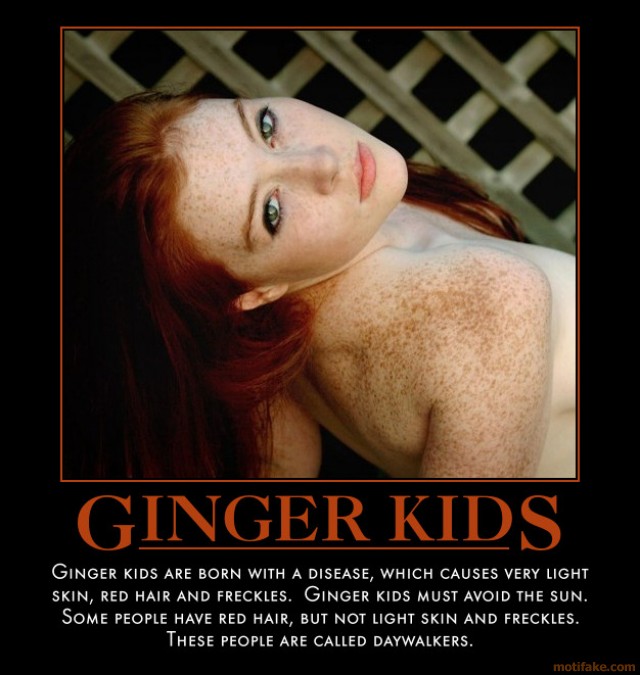
John Hawks need not worry about those of us who are seriously interested in his work, and how it might apply to Sasquatch studies, Yeren research, and Yeti expeditions. He has much more to fear from the future South Park quips now being developed by comedy writers who have discovered the fertile ground in the findings of his and his associates’ genome research.
About Loren Coleman
Loren Coleman is one of the world’s leading cryptozoologists, some say “the” leading living cryptozoologist. Certainly, he is acknowledged as the current living American researcher and writer who has most popularized cryptozoology in the late 20th and early 21st centuries.
Starting his fieldwork and investigations in 1960, after traveling and trekking extensively in pursuit of cryptozoological mysteries, Coleman began writing to share his experiences in 1969. An honorary member of Ivan T. Sanderson’s Society for the Investigation of the Unexplained in the 1970s, Coleman has been bestowed with similar honorary memberships of the North Idaho College Cryptozoology Club in 1983, and in subsequent years, that of the British Columbia Scientific Cryptozoology Club, CryptoSafari International, and other international organizations. He was also a Life Member and Benefactor of the International Society of Cryptozoology (now-defunct).
Loren Coleman’s daily blog, as a member of the Cryptomundo Team, served as an ongoing avenue of communication for the ever-growing body of cryptozoo news from 2005 through 2013. He returned as an infrequent contributor beginning Halloween week of 2015.
Coleman is the founder in 2003, and current director of the International Cryptozoology Museum in Portland, Maine.
Filed under Bigfoot, Cryptomundo Exclusive, CryptoZoo News, Forensic Science, Pop Culture, Sasquatch